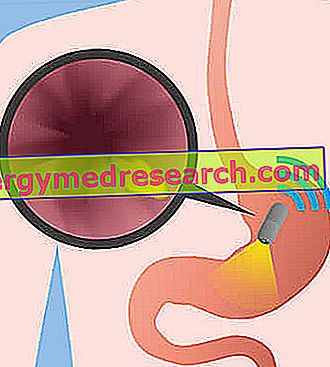Definition
Essential thrombocythemia is a chronic myeloproliferative syndrome characterized by an increase in platelet count (platelet counts), by megakaryocyte hyperplasia (cells derived from hematopoietic stem progenitors, responsible for the production of platelets) at the bone marrow level, and, from the point of view clinical, from thrombotic and hemorrhagic manifestations.
Essential thrombocythemia is more frequent in subjects aged 50 to 70 years. Rarely, cases are reported in pediatric age.
Essential thrombocytopenia is a disease characterized by an increased number of platelets, both in bone marrow and in peripheral blood; the survival of these blood cells is generally normal, although it may be reduced due to splenic sequestration.
Most common symptoms and signs *
- Miscarriage
- Fleeting love
- Asthenia
- Dysarthria
- Dyspnoea
- Bruising
- Hematemesis
- Gastrointestinal hemorrhage
- Hepatomegaly
- erythromelalgia
- Ease of bleeding and bruising
- Tingling in the hands
- Sore legs
- Legs tired, heavy legs
- Livedo Reticularis
- Headache
- Melena
- Paresthesia
- Loss of balance
- Reduced vision
- Nosebleeds
- scotomas
- splenomegaly
- Confusional state
- Fainting
- thrombocytosis
- Dizziness
Further indications
The disease may present with thrombotic and / or hemorrhagic manifestations. These are more frequent in the gastro-intestinal tract (hematemesis and melena), although they are more evident in the mucous membranes and skin (epistaxis and a tendency to develop haematomas).
Arterial and venous thrombosis can be found in about one third of patients, especially in the mesenteric, renal, portal and splenic levels. The phenomenon can cause variable symptoms, depending on the district concerned (eg neurological deficits in stroke or transient ischemic attack; leg pain and / or swelling in the lower limb thrombosis; chest pain and dyspnea in pulmonary embolism).
Other frequent essential thrombocytopenia symptoms are asthenia, headache, ophthalmic migraine, hands and feet paresthesia, instability, dysarthria, dizziness, scotomas, transient and fleeting blindness and syncopal seizures.
If the thrombosis involves the microcirculation of feet and hands, erythromelalgia occurs with digital ischemia; this condition typically causes erythema and burning pain in the extremities. About half of the patients experience splenomegaly, while an hepatomegaly is rare. In pregnant women, thrombosis can cause recurrent spontaneous abortions.
The course of the disease is chronic. Thrombotic and / or severe bleeding complications are rare, but can be fatal. Furthermore, essential thrombocytopenia can develop into myelofibrosis or acute leukemia, especially in the case of exposure to alkylating agents (cytotoxic therapy).
In case of suspected essential thrombocytopenia, it is necessary to perform the blood count, the peripheral blood smear and some cytogenetic investigations, which allow to verify the presence of the Philadelphia chromosome or BCR-ABL translocation. These evaluations make it possible to exclude the diagnosis of polycythemia vera, primary myelofibrosis, chronic myeloid leukemia, myelodysplastic syndrome or other myeloid neoplasms.
The constant diagnostic finding found in essential thrombocytopenia is a high and persistent number of platelets in peripheral blood (> 450, 000 /? L). Bone marrow biopsy can show a proliferation of large and mature megakaryocytes.
The treatment is controversial, but may use the administration of platelet aggregation inhibitors (such as acetylsalicylic acid or ticlopidine) to reduce the thrombotic risk.



